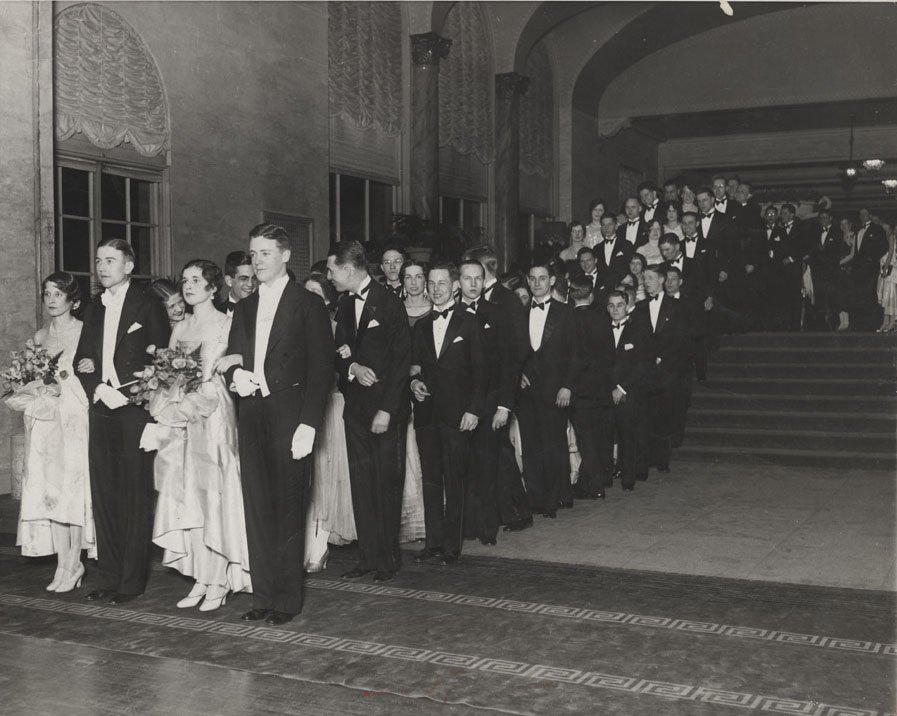Social Life
As early as 1898, a report to the University Council lamented the lack of a "college spirit" at the U of C-attributed at times to the quarter system, to the many commuter students, or to the emphasis on graduate study. Despite these complaints, the University was home to a rich array of extracurricular activities. While academic clubs such as Mortar Board and the Federation of University Women emphasized single-sex socializing, many other extracurriculars-including student publications, ethnic and cultural associations, and student government-offered membership to both men and women.
Since the University's founding, supervised social events brought men and women together on campus and off. In the first-floor social rooms of Ida Noyes Hall, students scheduled informal "dancing hours" weekly. During the 1920s, when some administrators worried that dancing was a frivolous distraction, Professor Edith Foster Flint argued that these mixers actually had value as "wholesome and invigorating recreation."
Ida Noyes and Hyde Park hotels also served as the sites of popular University formal events, including the year-end Interclass Hop and fraternity-sponsored dances. Perhaps the most anticipated event on the University's social calendar was the annual Washington Prom, first organized in 1894. This campus-wide evening of dinner and dancing was frequently covered by the city's newspapers, which followed the annual crowning of "Miss U of C" from a court of popular women undergraduates.
Indeed, despite the University's studious reputation, many early student activities centered on glamour. In the 1930s, theCap and Gown sponsored beauty contests for University women. And during the 1940s, the student-run Pulse magazine featured a bevy of alluring co-eds posing for its monthly covers.




